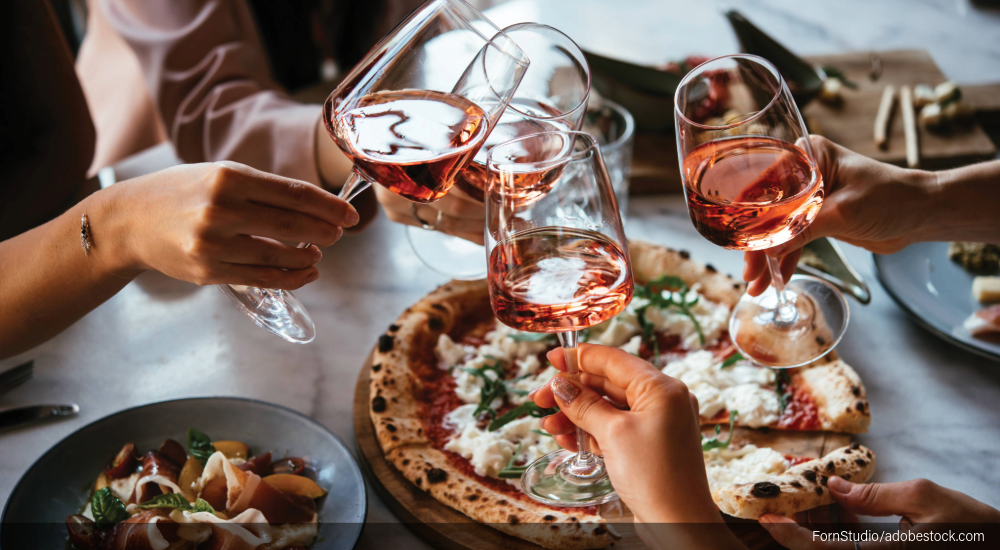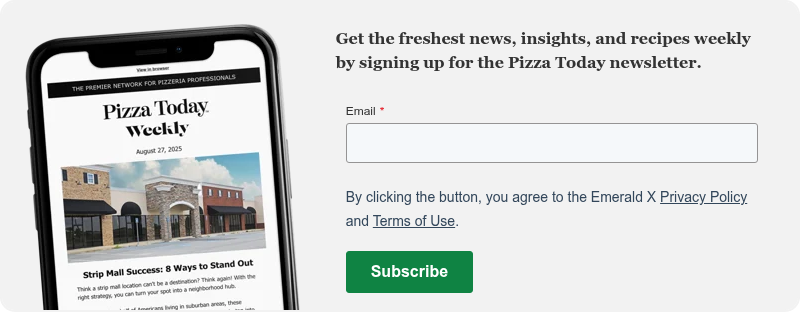Evaluate the ROI on getting more customers, increasing visits and boosting average ticket value
As pizzeria owners and operators, we are constantly striving to increase sales. There are three ways to accomplish this:
-
- Get more customers
- Increase frequency of existing customers
- Increase average ticket value
- Get more customers
While all methods should be part of your plan, one method is clearly the most profitable. Let’s discover which one that is together.
Our sample pizzeria has 500 orders per week with an average ticket of $35, giving us weekly sales of $17,500.
Get More Customers
Reaching new customers usually requires spending marketing dollars. The big chain pizzerias call a three percent increase in customer counts a win. To do this, they usually spend upwards of five percent of their sales on marketing programs. Acquiring new customers is expensive, and it is not until the new customer comes back several times that you start to profit from their transactions with you.
500 orders + 3% = 515 customers @ $35 = $18,025
Cost $17,500 x 5% = $875
Cost = $875 for a $525 sales increase
Increase Frequency of Existing Customers
Getting customers to visit more often is less expensive than marketing but will usually require an incentive. The best approach to this is a loyalty program. These work by offering discounts on future visits or rewards based on full-priced purchases.
According to the National Restaurant Association (NRA), 52 percent of adults participated in loyalty programs in 2024, with a 20 percent increase in frequency of visits. Using 10 percent of every loyalty customer’s order as the budget, a loyalty program would look like this:
500 x 52% = 260 loyalty customers x 20% frequency increase = 52 extra visits @ $35 = $1,820 + $17,500 = $19,320
Cost 260 x $35 @ 10% discount = $910
Cost = $910 for a $1,820 sales increase
Increase Average Ticket value
Increasing your average ticket means getting your customers to purchase more every time they order a pizza. With the correct method of upselling, average check size is increased by 30 percent, according to the NRA. That is a 30 percent sales increase (in theory) at NO COST to you. I say no cost, but I recommend a budget of 10 percent of the increased sales, which I will explain next.
First, here is how this pencils out:
$17,500 + 30% = $22,750
Cost $5,250 x 10% = $525
Cost = $525 for a$5,250 sales increase
AMAZING! Now that you see WHY this method is the best, let’s focus on the HOW.
Step 1: The Program Name
When designing your “Increasing the Average Ticket” program, I recommend coming up with a fun name so your team can get on board with the idea that you are improving the customer’s dining experience by offering appropriate menu additions. Here are some examples: Servers’ Savvy Suggestions, Culinary Companions or Tasteful Additions. For this example, let’s use Tasteful Additions.
Step 2: Points of Contact
There are three points of contact to be addressed in your Tasteful Additions program. To place their order, the customer is interacting with your restaurant either digitally, over the telephone or in person. At each of these points of contact, we want to provide suggestions for menu items that will both enhance the customer experience and increase the average ticket.
Digitally includes website ordering, your ordering app or kiosk. This means you will need to train these interfaces to “suggest” menu items for the customer to add to the order. Here is where the 10 percent budget comes into play. Offering a discount to incentivize the customer to add the item is an effective way to achieve the 30 percent increase in average ticket. The designer of your website, app and kiosk can help you build the Tasteful Additions portion of the ordering process. Many POS companies already have the structure for this in place, so you simply add the offers.
Telephone orders are the second point of contact. Different from your digital ordering systems, success here requires your team member to participate in the Tasteful Additions program. Rather than using the 10 percent budget to discount the order, use it to incentivize your team member. Your POS system probably has an upselling program as part of its reporting, so you can measure the results of each team member. If not, we’ve found an honor system works well. For every upsold item, the team member would get 10 percent of the upsold amount as a bonus. We pay out weekly.
Cashiers and servers are the final point of contact. The good news is that servers inherently know that a higher average ticket means a higher tip, so they tend to be really good at this. With some training about your Tasteful Additions program, they will probably get the best results. Cashiers, however, will need to be incentivized with the same 10 percent bonus as the person taking telephone orders.
Step 3: Tasteful Additions
Tasteful Additions ideas:
Ask the question: What items might the customer want but has simply forgotten to order? These items will not require any discount. Examples include dipping sauce and drinks. We offer soft drinks, beer and wine, and often the prompt to add these items is sufficient.
Extra cheese: Who but the lactose intolerant would not love extra cheese on their pizza? The last prompt before entering the pizza on the ticket should be “Extra Cheese?”
Appetizers and desserts: Prompting the Tasteful Addition of an appetizer or dessert item when the customer views their cart, with a visual of the regular price crossed out and the discounted price presented, is an effective method.
Package deals: A Tasteful Addition presented as a package to an item added to the cart works well. For example, adding a second pizza or your most popular appetizer/side (in our case, hot wings) at a “package price” also is effective.
Increasing sales and increasing profits do not always go hand in hand. Tasteful Additions will bring the two together like pizza and pineapple. No, wait! There probably is a better simile for that.
DAN COLLIER is the founder of PizzaMan Dan’s in California and a speaker at International Pizza Expo.
 Read the November 2025 Issue of Pizza Today Magazine
Read the November 2025 Issue of Pizza Today Magazine
This month, we are diving deep on all things cheese. Learn how the fluctuating commodities market can impact the price you pay for mozzarella and other block cheeses. Then, find out how operators are using craft beer cheddar, gorgonzola and plant-based cheeses made from cashews, coconuts, peas and other bases to create pizzas that are visually and gastronomically stunning. Round out your education for the month by brushing up on pizzeria art, SOPs and winter squash.
Check out the full Digital Edition – Pizza Today November 2025.



